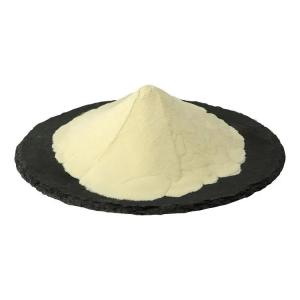News list
News Center
Hot Product
News
Phosphoric acid and nutrient composition studies
Time:2025-10-11
1. Introduction
Phosphoric acid (H₃PO₄) plays a central role in the intersection between food chemistry, nutrition science, and industrial processing. As a common additive in the global food supply, it has become a subject of growing interest within nutrient composition studies—research efforts that analyze how food components and additives influence overall nutritional balance. Understanding the relationship between phosphoric acid and nutrient composition helps clarify its role in food formulation, dietary phosphorus intake, and nutritional policy development.
2. Background: Phosphoric Acid in the Food System
In the food and beverage industry, phosphoric acid is primarily used as an acidulant, flavor enhancer, and stabilizer. It contributes to the characteristic tang of carbonated drinks and helps maintain pH stability in dairy, meat, and grain-based products. Because it is a source of inorganic phosphorus, its inclusion can influence the overall nutrient profile of foods, especially regarding phosphorus content and bioavailability. This connection has drawn attention from both food technologists and nutrition scientists seeking to understand additive-derived nutrients.
3. Nutrient Composition and Phosphorus Bioavailability
Phosphorus is a vital nutrient that supports bone mineralization, cellular energy transfer (ATP), and enzymatic function. Phosphoric acid and its salts represent a highly bioavailable form of phosphorus compared to naturally occurring organic phosphorus in plant-based foods. Nutrient composition studies have therefore explored how phosphoric acid impacts total phosphorus intake and the phosphorus-to-calcium ratio, a key dietary metric in balanced nutrition research. These studies aim to distinguish between beneficial nutrient contribution and potential imbalances in highly processed diets.
4. Analytical Approaches in Nutrient Studies
Modern nutrient composition studies utilize advanced analytical techniques—such as inductively coupled plasma mass spectrometry (ICP-MS) and ion chromatography—to quantify phosphorus derived from phosphoric acid in foods. These methods allow precise measurement of inorganic phosphorus levels and help assess the impact of food processing on nutrient density. In addition, computational modeling is increasingly used to simulate how phosphoric acid inclusion alters the overall nutrient matrix in dietary patterns.
5. Influence on Food Formulation and Labeling
From a formulation perspective, phosphoric acid contributes to consistency and product stability without significantly altering macronutrient ratios. However, its inclusion adds measurable phosphorus to the nutrient composition table, affecting nutritional labeling and dietary phosphorus databases. Researchers and regulatory bodies have collaborated to improve the accuracy of phosphorus content reporting, ensuring consumers and health professionals can evaluate additive-derived nutrients within total dietary assessments.
6. Global Nutrition Research and Policy Implications
Across global nutrition research, phosphoric acid’s role in nutrient composition is linked to discussions about processed food reformulation and nutrient transparency. Policymakers and scientific committees, including the FAO, WHO, and Codex Alimentarius Commission, emphasize the need for clear phosphorus data in food composition databases. Integrating phosphoric acid into nutrient composition studies supports better public health monitoring, dietary guideline refinement, and risk assessment related to phosphorus exposure.
7. Future Directions in Research
Emerging research directions include evaluating the interaction of phosphoric acid with other micronutrients, such as calcium, magnesium, and iron, within complex food systems. Scientists are also exploring how processing conditions influence the retention and reactivity of phosphorus compounds. In parallel, sustainability studies are addressing the environmental footprint of phosphate use, linking nutrient composition analysis with resource management strategies.
8. Conclusion
Phosphoric acid serves as both a technological ingredient and a nutritional factor, making it a key subject in modern nutrient composition studies. Through analytical precision and interdisciplinary research, scientists continue to uncover how this compound shapes the nutritional landscape of processed foods. As global food systems strive toward transparency, balance, and sustainability, phosphoric acid will remain a significant focal point in understanding the relationship between food additives and nutrient composition.
Phosphoric acid (H₃PO₄) plays a central role in the intersection between food chemistry, nutrition science, and industrial processing. As a common additive in the global food supply, it has become a subject of growing interest within nutrient composition studies—research efforts that analyze how food components and additives influence overall nutritional balance. Understanding the relationship between phosphoric acid and nutrient composition helps clarify its role in food formulation, dietary phosphorus intake, and nutritional policy development.
2. Background: Phosphoric Acid in the Food System
In the food and beverage industry, phosphoric acid is primarily used as an acidulant, flavor enhancer, and stabilizer. It contributes to the characteristic tang of carbonated drinks and helps maintain pH stability in dairy, meat, and grain-based products. Because it is a source of inorganic phosphorus, its inclusion can influence the overall nutrient profile of foods, especially regarding phosphorus content and bioavailability. This connection has drawn attention from both food technologists and nutrition scientists seeking to understand additive-derived nutrients.
3. Nutrient Composition and Phosphorus Bioavailability
Phosphorus is a vital nutrient that supports bone mineralization, cellular energy transfer (ATP), and enzymatic function. Phosphoric acid and its salts represent a highly bioavailable form of phosphorus compared to naturally occurring organic phosphorus in plant-based foods. Nutrient composition studies have therefore explored how phosphoric acid impacts total phosphorus intake and the phosphorus-to-calcium ratio, a key dietary metric in balanced nutrition research. These studies aim to distinguish between beneficial nutrient contribution and potential imbalances in highly processed diets.
4. Analytical Approaches in Nutrient Studies
Modern nutrient composition studies utilize advanced analytical techniques—such as inductively coupled plasma mass spectrometry (ICP-MS) and ion chromatography—to quantify phosphorus derived from phosphoric acid in foods. These methods allow precise measurement of inorganic phosphorus levels and help assess the impact of food processing on nutrient density. In addition, computational modeling is increasingly used to simulate how phosphoric acid inclusion alters the overall nutrient matrix in dietary patterns.
5. Influence on Food Formulation and Labeling
From a formulation perspective, phosphoric acid contributes to consistency and product stability without significantly altering macronutrient ratios. However, its inclusion adds measurable phosphorus to the nutrient composition table, affecting nutritional labeling and dietary phosphorus databases. Researchers and regulatory bodies have collaborated to improve the accuracy of phosphorus content reporting, ensuring consumers and health professionals can evaluate additive-derived nutrients within total dietary assessments.
6. Global Nutrition Research and Policy Implications
Across global nutrition research, phosphoric acid’s role in nutrient composition is linked to discussions about processed food reformulation and nutrient transparency. Policymakers and scientific committees, including the FAO, WHO, and Codex Alimentarius Commission, emphasize the need for clear phosphorus data in food composition databases. Integrating phosphoric acid into nutrient composition studies supports better public health monitoring, dietary guideline refinement, and risk assessment related to phosphorus exposure.
7. Future Directions in Research
Emerging research directions include evaluating the interaction of phosphoric acid with other micronutrients, such as calcium, magnesium, and iron, within complex food systems. Scientists are also exploring how processing conditions influence the retention and reactivity of phosphorus compounds. In parallel, sustainability studies are addressing the environmental footprint of phosphate use, linking nutrient composition analysis with resource management strategies.
8. Conclusion
Phosphoric acid serves as both a technological ingredient and a nutritional factor, making it a key subject in modern nutrient composition studies. Through analytical precision and interdisciplinary research, scientists continue to uncover how this compound shapes the nutritional landscape of processed foods. As global food systems strive toward transparency, balance, and sustainability, phosphoric acid will remain a significant focal point in understanding the relationship between food additives and nutrient composition.


 CN
CN





